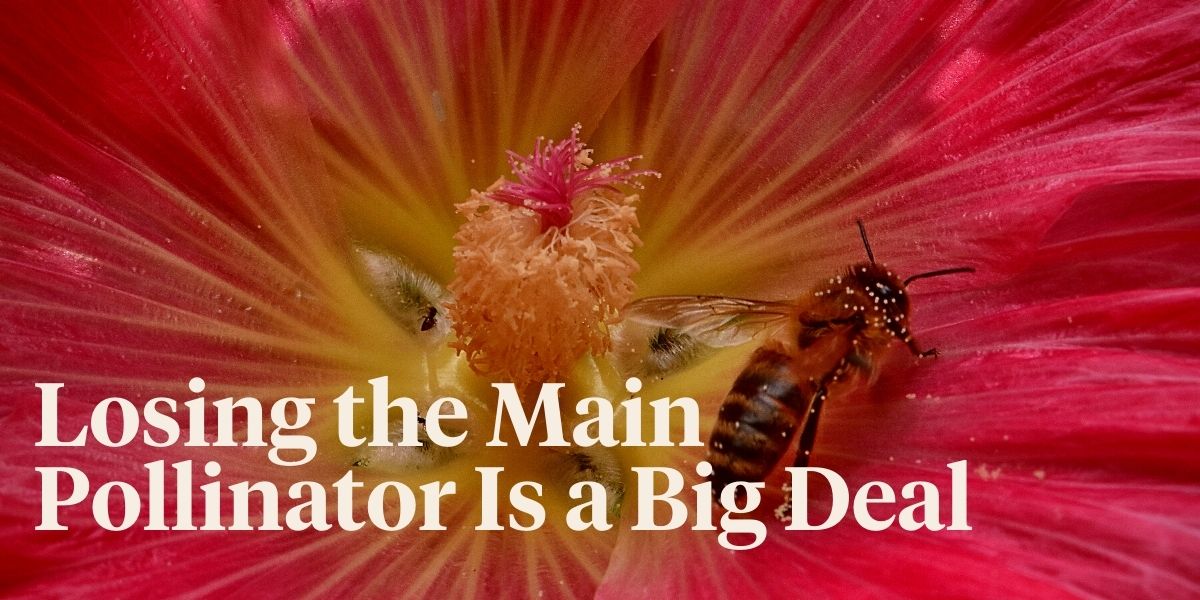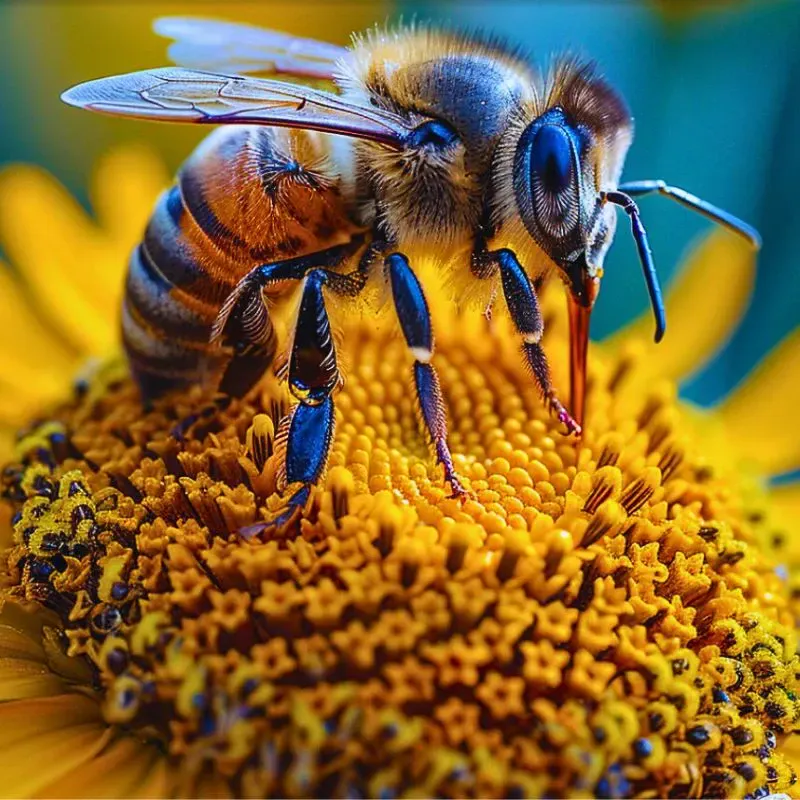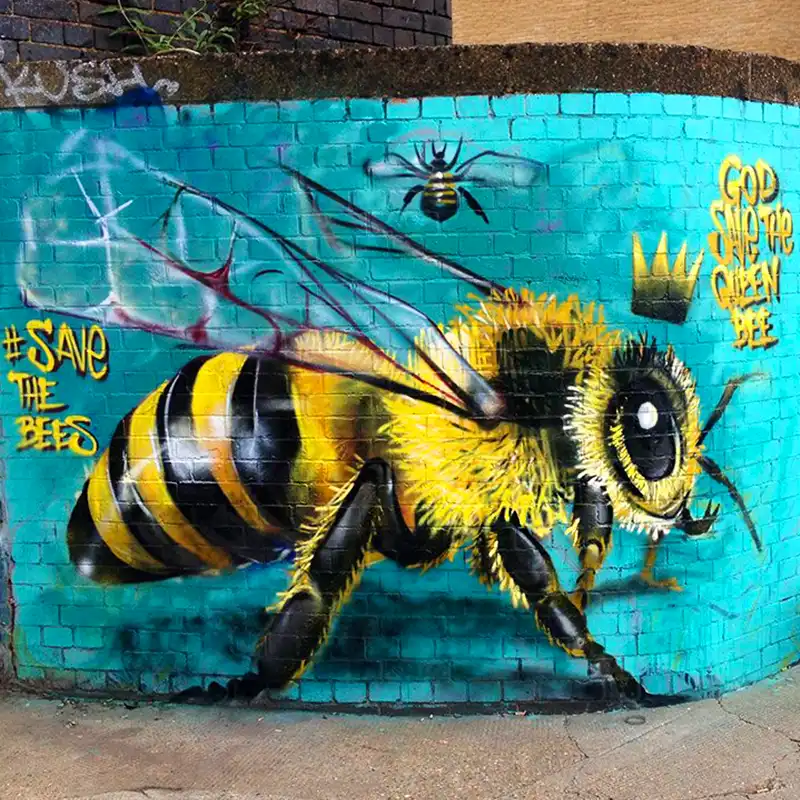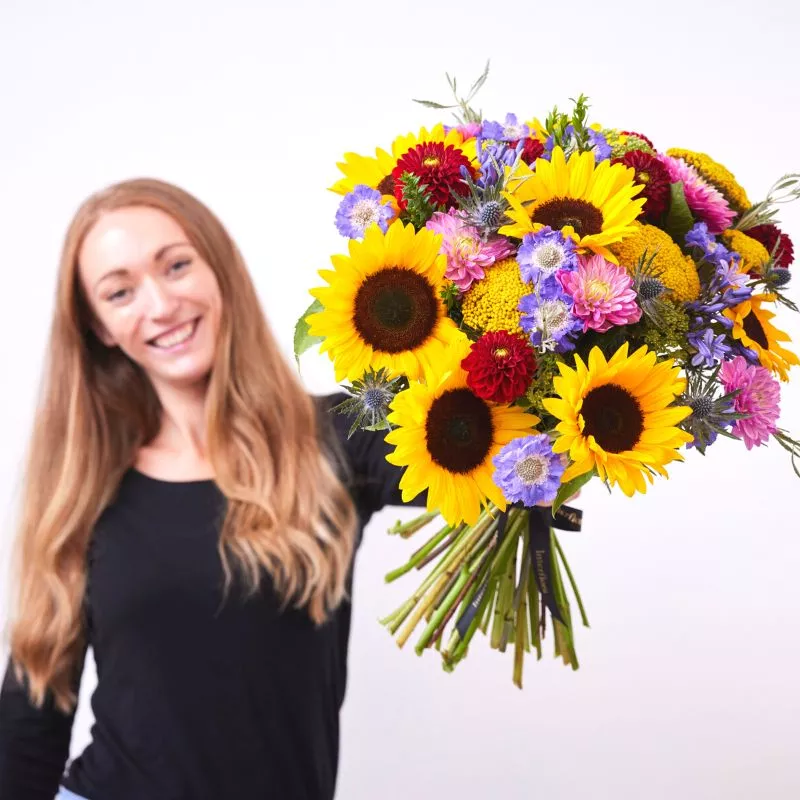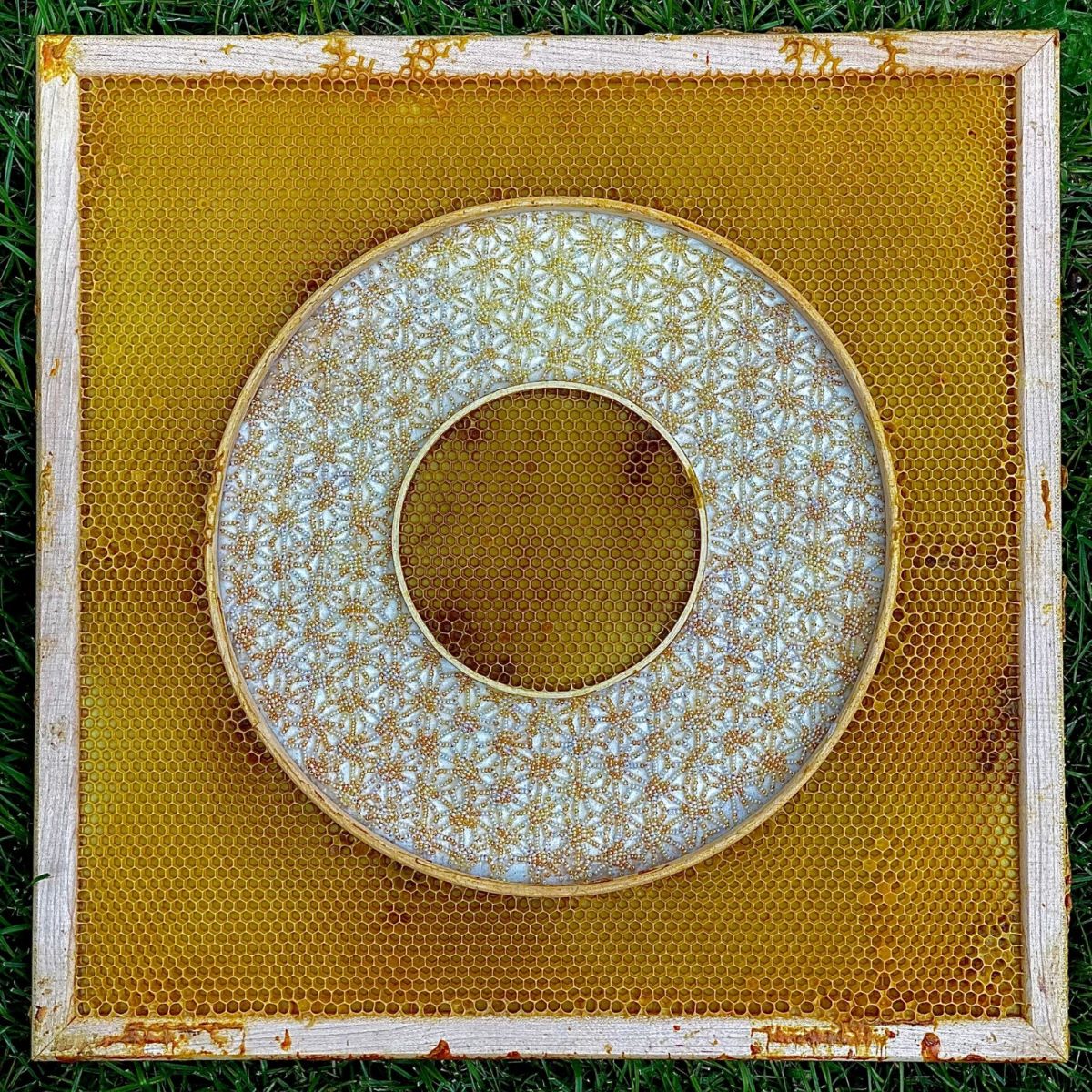Research shows that since March 2020, eight bee species have joined the endangered list, seven of which live on the Hawaiian Islands. Losing the main pollinator for such a big island, known for having unique and endangered scenery, is a big deal. 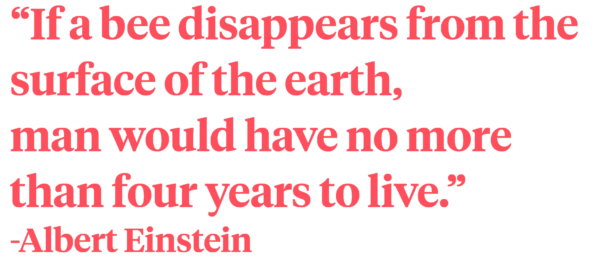
But how can we protect and save the bees? You might not think you can do much, but there is a lot even we tiny humans can do to save the bees and help bring a more stable climate and healthier environment. If you want to do your part in this critical mission, consider creating a habitat full of bee-friendly plants. By doing so, you will provide a continuous source of pollen and nectar for our tiny friends and enjoy a beautiful garden at the same time.
Why Are Bees So Important
In case all the bees disappear, will the human population follow? The answer is: No. Or at least not for that reason alone.
Pollination
The little buzzing insects rely on Mother Nature as much as Mother Nature depends on them. Bees are important because they can pollinate to a significant scale. They contribute to entire ecosystems that provide living space and an opportunity for different species to reside side by side. Almost 90% of flowering plants rely on pollination by animals. If the main pollinator vanishes, we won’t disappear but we will have to prepare to live in an entirely different world. Most species of fruits and flowers need bees in order to produce a bountiful harvest. For example, tomatoes, strawberries, pears, cherries, apples, and avocados all depend on the pollination of bees. What about tea and coffee The case is the same. Bees have a key role in coffee production. According to Taylor Ricketts, the director of the University of Vermont's Gund Institute for Environment, 25% of the coffee produced counts on them. In fact, coffee flowers open briefly for pollination — between 2 and 5 days, already giving bees a short period of time to get the job done.
Honey
Bees have had an important role in our lives and culture for centuries. For example, people have been using honey for its antioxidant, antibacterial, and wound healing properties, and as a natural alternative for beauty and personal care products. It's also associated with reducing the risk of heart disease, by increasing the blood flow. This is just half of the list of reasons why they are so important. Now, let's look at how we can fight the issue.
Bees have had an important role in our lives and culture for centuries. For example, people have been using honey for its antioxidant, antibacterial, and wound healing properties, and as a natural alternative for beauty and personal care products. It’s also associated with reducing the risk of heart disease, by increasing the blood flow. Besides their love for these busy creatures, honey is one of the reasons many bee enthusiasts start beekeeping. They invest ample time and resources in beekeeping kits and equipment and caring for these efficient little pollinators. This is just half of the list of reasons why they are so important. Now, let's look at how we can fight the issue.
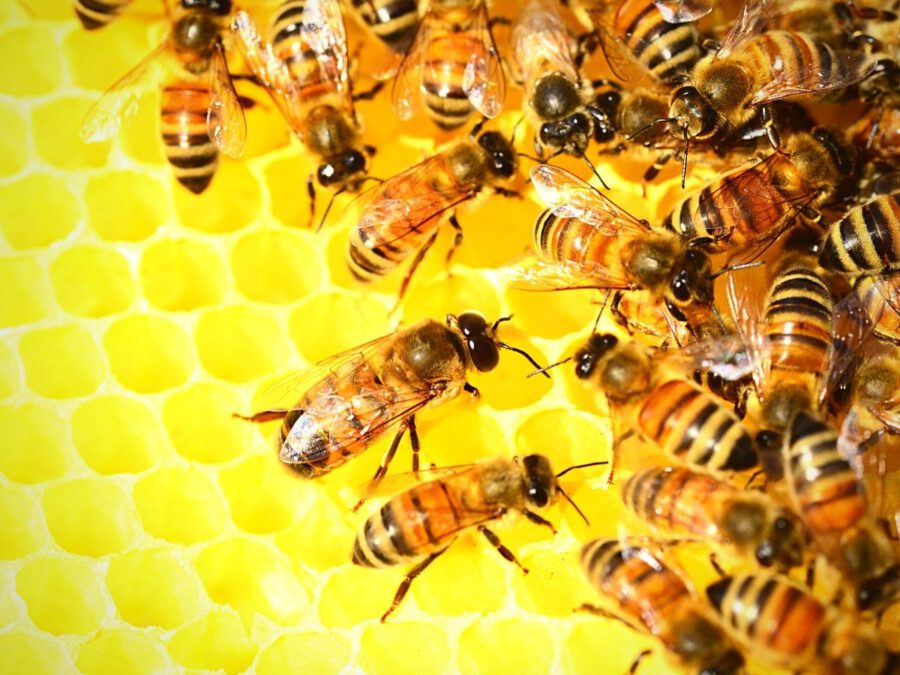
Top 7 bee-friendly plants
One of the main reasons behind the decrease in the number of bees worldwide is the increasingly high temperatures. However, even this wouldn’t be such a problem if there was enough flora for the bees to hide in. This is where we come in. By planting more trees, bushes, and flowers, we create more shelters. So here are 7 of the best bee-friendly plants, rich in nectar and pollen, that you can grow in your garden to attract and help the fuzzy cuties.
Lavender
If you already have lavender in your garden, you might have noticed that it attracts a significant number of fuzzy friends. This is because the plant is rich in both nectar and pollen. Another reason behind the powerful appeal is that it blooms in early spring, when the bees are the most hungry but have fewer choices.
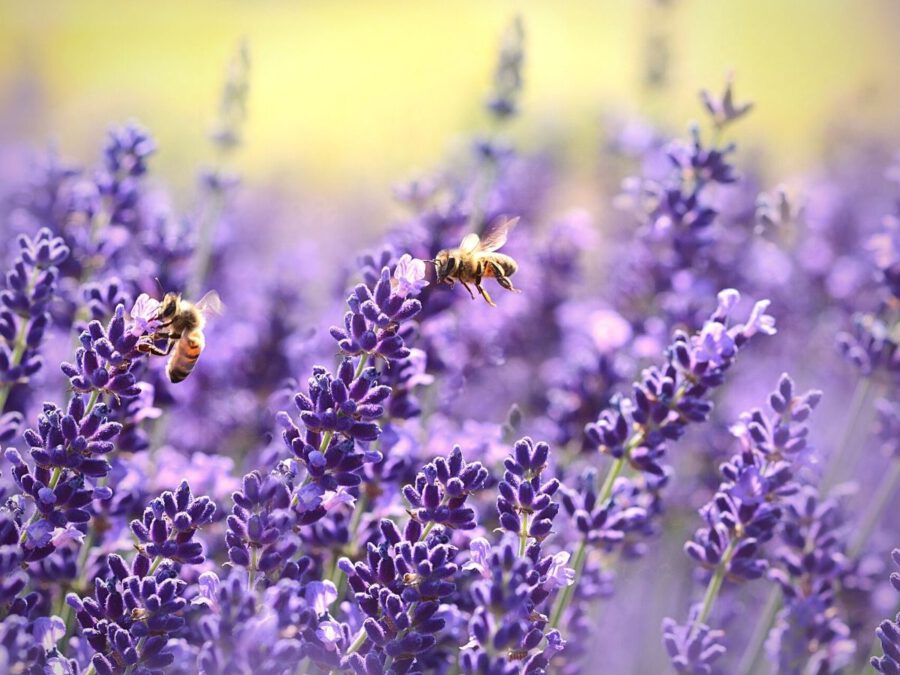
Something to note is that lavender needs well-drained soil when planted. You also need to pay attention to the pH of the soil. If you plant it in highly acidic soil, lavender will go from breathtaking to dead in no time. Once it starts growing, lavender is considered a relatively low-maintenance plant that requires minimal watering. When the purple flowers have matured and the stems have become wood—like, clip the plant halfway. Later, remove the faded blooms to stimulate growth and the flowering process.
Borage (Starflower)
Thinking of a multi-purpose, yet bee-friendly plant? Well, we’ve got the perfect one for you! Borage is not just a plant that attracts bees and complements the looks of a garden. The Mediterranean plant is also famous for its use in the kitchen. Planting Starflower should happen mid-spring, following the last frosts and when temperatures are not exceeding 21 degrees.
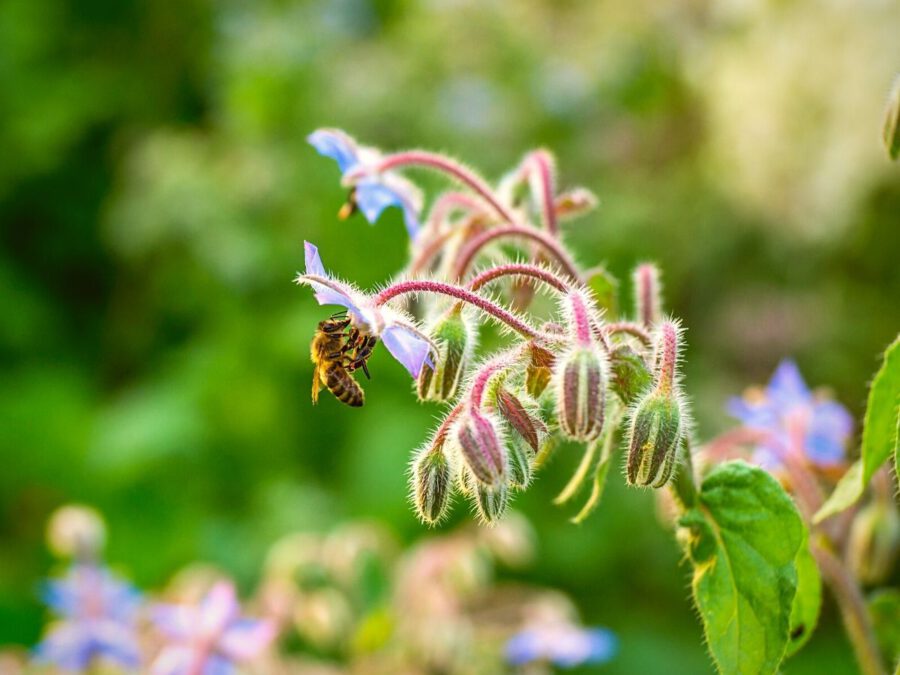
Borage plants don’t do well with moving around. For that reason, before you start, decide on a suitable and permanent spot to sow. Because your plant will grow from a seed, it will require intense watering until it reaches maturity. When that happens, cut the starflower half its height to stimulate re-blooming.
Foxgloves
Foxgloves have a brief life. Most of them are biennial, meaning, they form beautiful, intense purple-pink flowers for the first two years, and then die. The wide, tube-like form of its flowers is a perfect land spot for the bees, as it helps them reach the needed pollen and nectar. Important: All parts of the flower are poisonous. Digesting the beautiful plant will lead to possible cardiac arrhythmia and nausea.
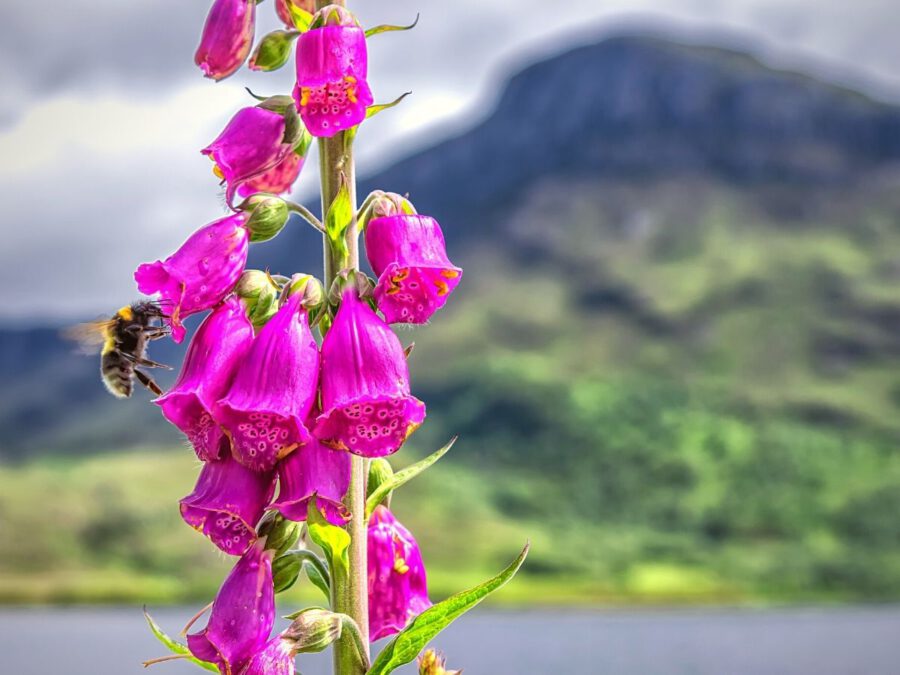
Foxgloves prefer moist and shady areas. It’s best to plant it during cooler days, in somewhat acidic soil. The flower needs a lot of water. But if overdone, you will ‘drown’ it and limit access to oxygen. To stimulate blossoming, keep cutting the fading stems. Once done, good liquid plant food will be enough to encourage second flowering for the season.
Bluebells (Common Bluebells)
As the name already gives this away, bluebells are beautiful herbs with bell-shaped flowers. They are a great choice for your bee-friendly garden since pollinators have a soft spot for them because of their sweet nectar. In Britain, bluebells are legally protected, which means that you’ll get in trouble for picking them or inflicting damage. This is because this bee-friendly plant cannot photosynthesize and will take years to recover from damage.
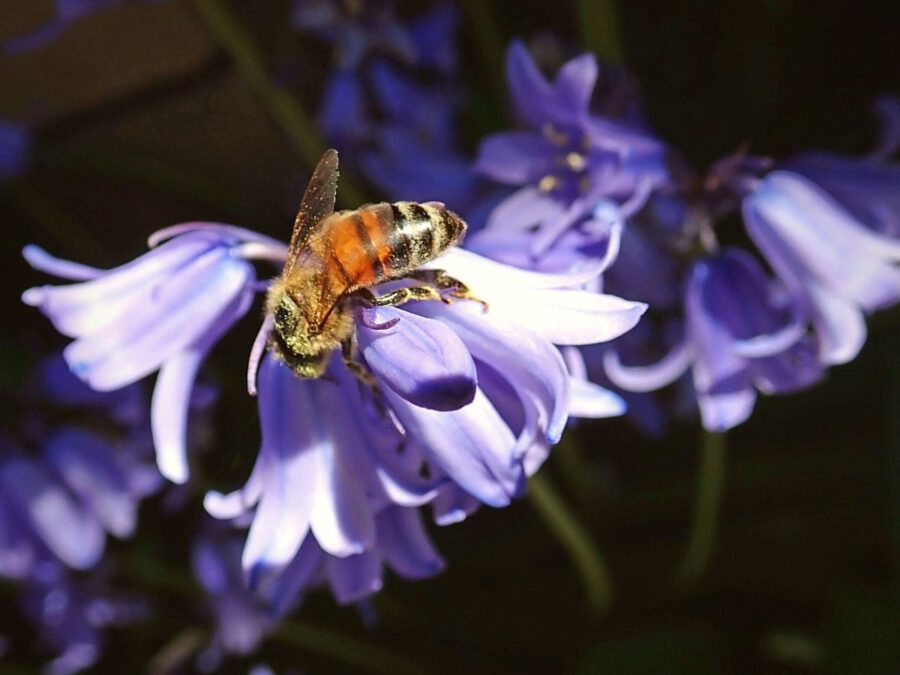
Similar to the foxglove, bluebells also need shady spots, preferably in a woodland-like area. Plant the bulbs 10 cm deep and 10 cm apart and when done, make sure you water them well. In the right surroundings, bluebells can take care of themselves with little supervision. If you wish to spread the plant, after flowering, pick the bulbs out and spread them around. Something to keep in mind is that the herb can spread out like a weed and overtake the space of other plants.
Rosemary
Bees’ favorite plant, rosemary attracts all species of buzzing animals. It’s as famous among other nectar-loving pollinators as well. No wonder the plant has such an appeal-it can bloom as early as February and continues for a long period of time. You should plant rosemary in early spring when there are no more signs of frost. The famous herb does well growing indoors, but you can also have it in raised beds and in-ground. When planting, remember to spread the seeds 60-90 cm apart, in a sunny area with rich and dry soil.
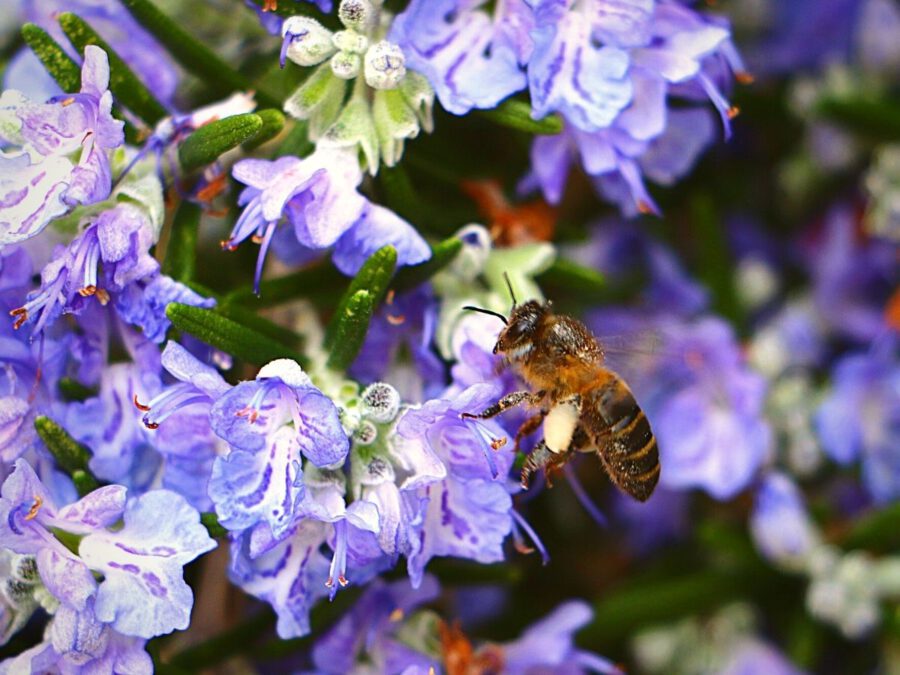
Water the bee-friendly plant on a regular basis. Again, make sure you don’t overdo it. During winter times, rosemary can still grow outside, but we recommend keeping some of it in pots indoors to be safe in case of a harsher winter. You should expect the plant to go wood-like over time. Prevent this by continuously watering and pruning your Rosemary. This way you will also encourage new leaves to develop.
Bee Balm (Monarda)
The flower has a daisy-like shape and its colors vary in different shades of purple, pink, red, and white. Most bee balm plants reach between 70 cm and 1 m in height, but “dwarf” varieties of the plant can also be encountered. Bee balm also prefers sunny spots, however, during the hot summer months it will do better somewhere shadier. When planting bee balm, space the seeds 45-60 cm apart in moist, organically rich soil. You can plant it at any point throughout the year, with spring and early autumn being the best time slots.
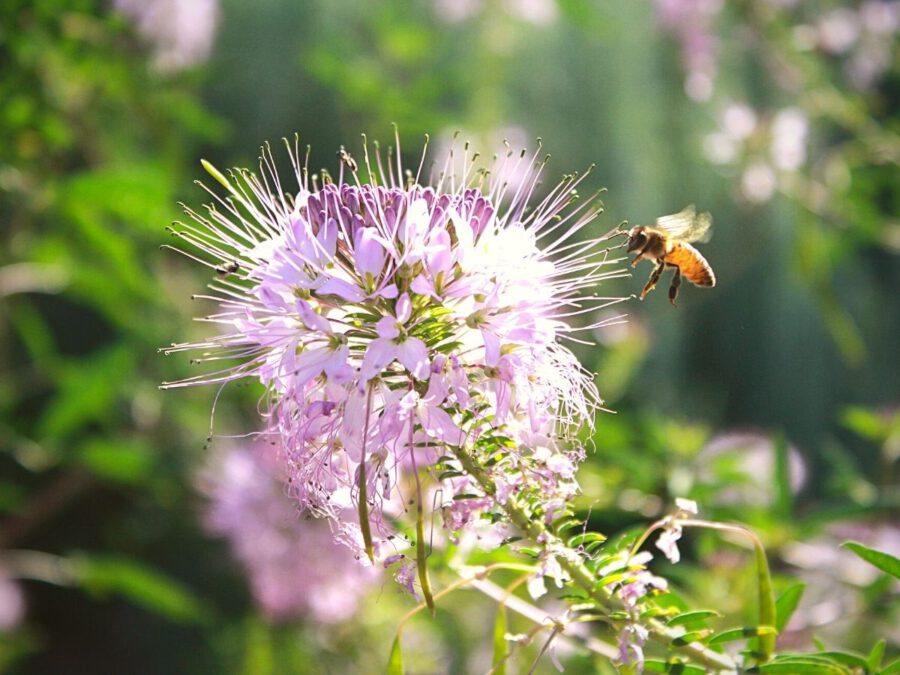
Looking after a bee balm plant will be an easy-peasy job, as long as you keep the soil moist. At the end of the blooming season, in late autumn, cut the flower as low as 5 to 10 cm from the ground. This will stimulate better growth in the next season. Note that bee balm is part of the mint family, meaning they spread out throughout the season as well.
Cosmos Flower
There are many different variations of the cosmos flower both in size and color. It can reach from 7 to 13cm in height and the colors vary between chestnut, yellow, pink, orange, red, and white. Apart from its decorative purposes, the graceful flower is also famous for its historical use as a natural dye, because of its vibrant colors. The seeds should not be deeper than 1 cm from the surface and about 30 cm apart. The best time to do so is during spring. Keep in mind that it can take about 7 weeks for a young cosmos flower to bloom.
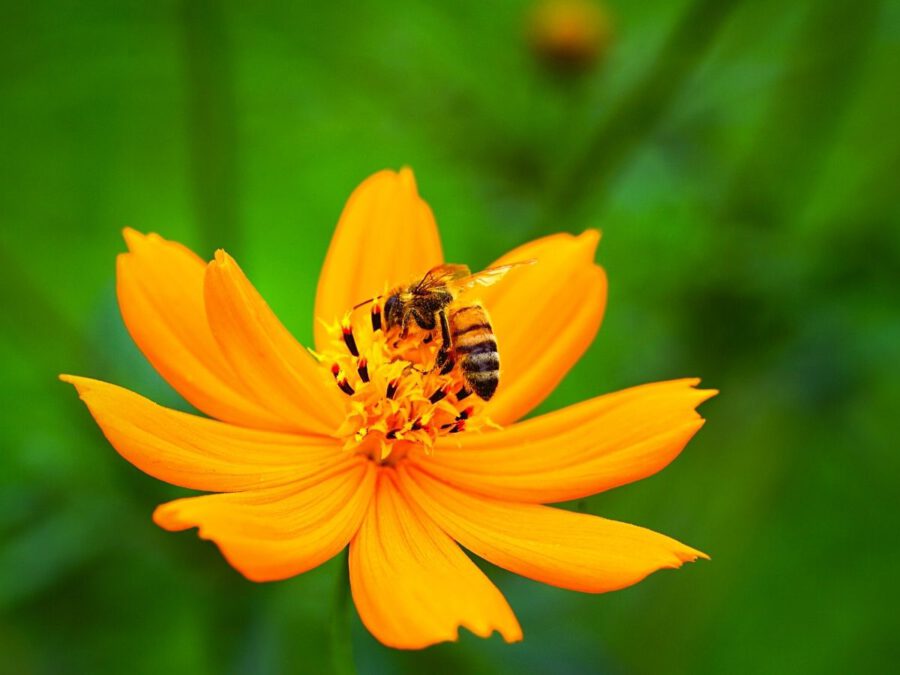
The best conditions for this elegant flower to grow are hot, dry areas, in direct sunlight. In case you want a bushier plant, we encourage you to cut or snap off the tips of the plant by about 20 cm in early May. A thing to know about the bee-friendly Cosmos is that it’s an annual plant, meaning it doesn't naturally come back every year. To keep your cosmos flowering, keep deadheading the blooms throughout the season. This will encourage your plant to focus on seeding rather than developing more blooms.
More Tips on How to Attract and Help the Bees
How can anyone feel frightened by bees? They are fuzzy and adorable! In fact, let's break some stereotypes! Did you know that the vast, scary bumblebees are truly pretty much innocent and delicate? They will only sting when endangered or provoked. Bees are smart, especially an insect! From communication and mimicking certain behaviors to being known for their numeracy abilities. According to Lars Chittka, a Sensory and Behavioural Ecology Professor at the Queen Mary University of London, research shows that little animals understand the concept of the number zero and can count up to four. This is extremely impressive, as humans only started interpreting the concept of zero around the third and fourth centuries. With that in mind, we hope you understand and love bees a little bit more. Now, let's get back to saving them! Okay, so you’ve created a plant paradise for the bees, but what more can you do? Well, provide them with an even better environment for them to live and prosper. Here is what you can do:
- Bees need water — build the fuzzy animals a bee bath.
- Get creative and make bee hotels. A wooden plank, dried reed straws or bamboo stems, a drill, screws, and secateurs, is all you need to get the job done
- If possible, clear some space for bee nests.
- Avoid using pesticides- opt-out of natural methods.
Conclusion
- We need to appreciate bees a bit more. We certainly cannot live without them, nor can they survive without our help!
- Unfortunately, more and more bee species are becoming endangered so it’s up to us to save them.
- There are lots of bee-friendly plants, many of them easy to maintain.
- Grab your tools and get creative! Going that extra mile and building shelters for the little superheroes will make a big difference.

